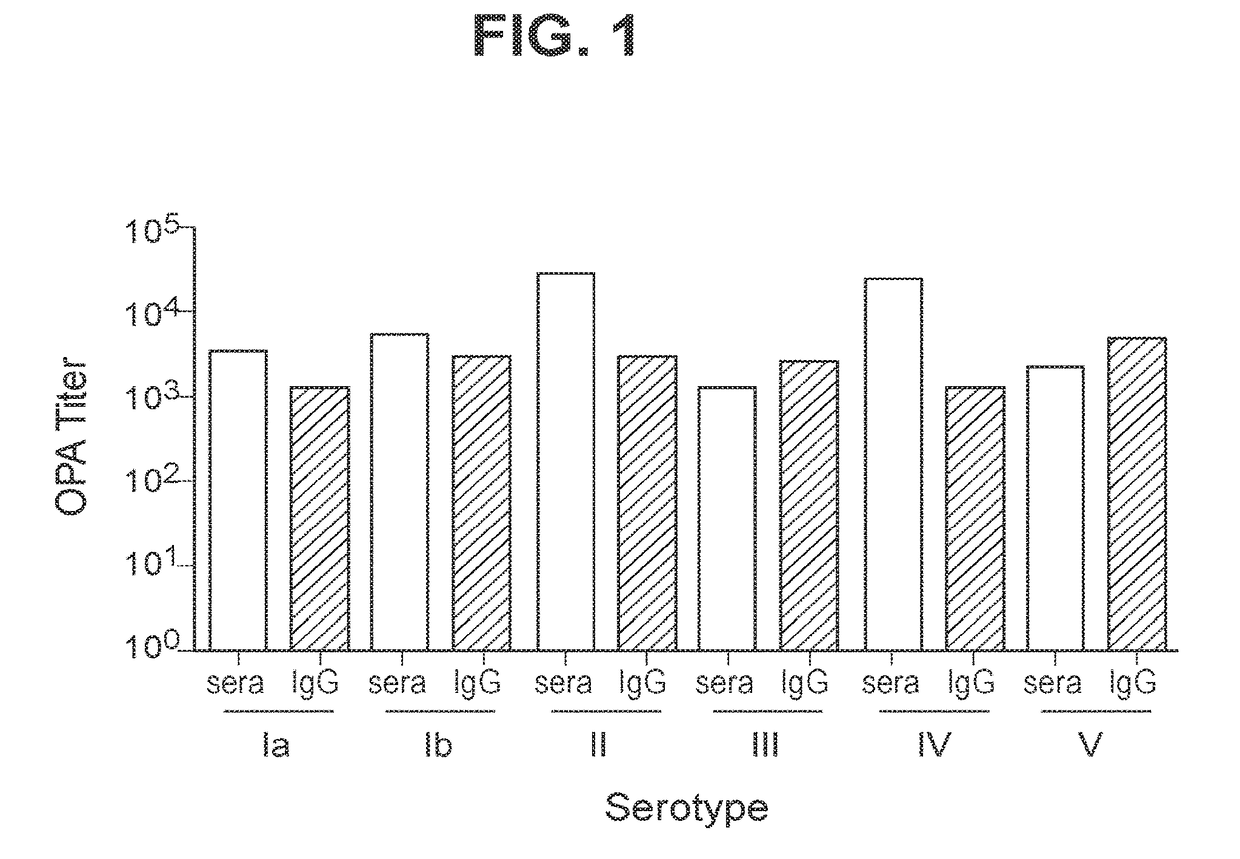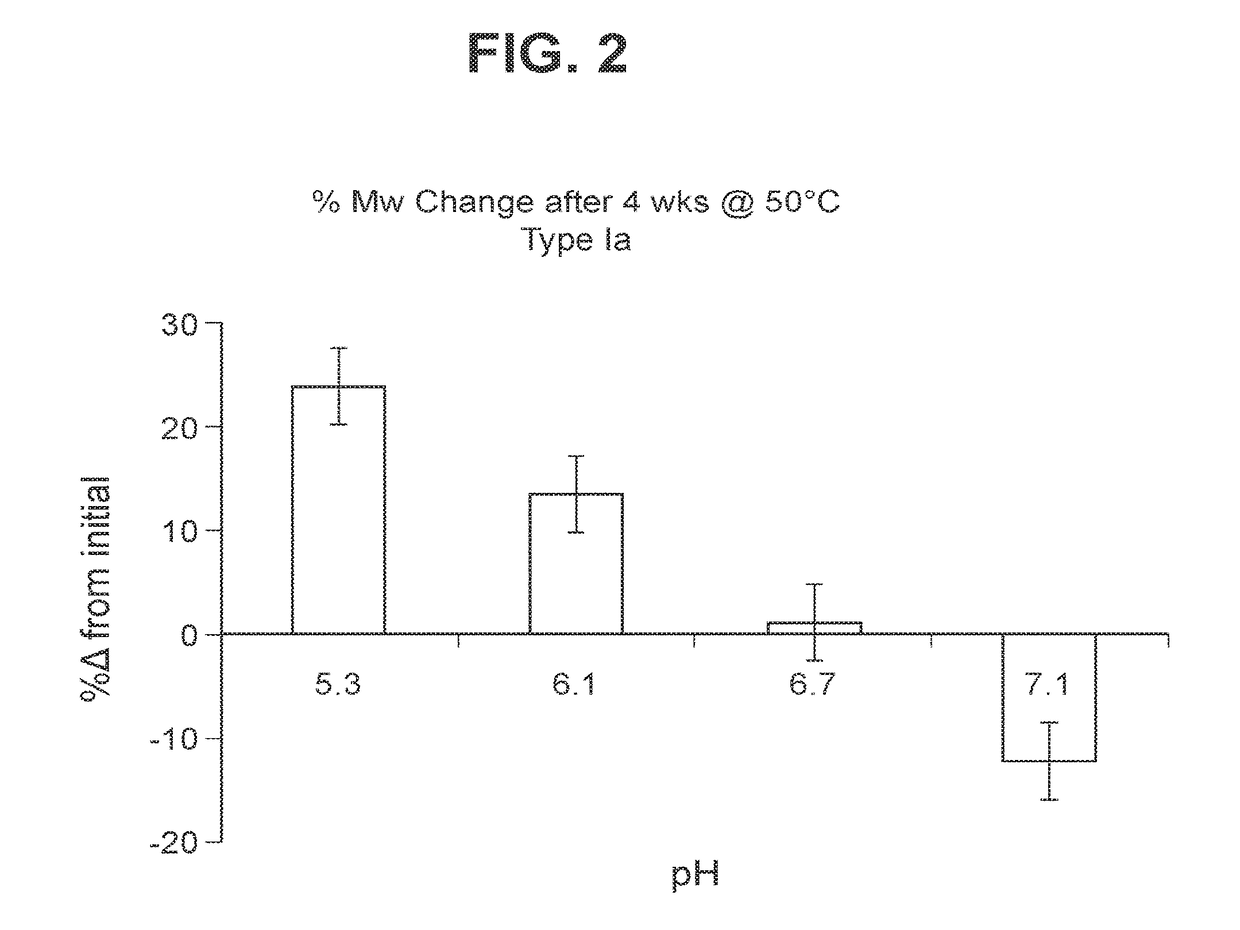Immunogenic Compositions and Uses Thereof
- Summary
- Abstract
- Description
- Claims
- Application Information
AI Technical Summary
Benefits of technology
Problems solved by technology
Method used
Image
Examples
example 1
Preparation of Polysaccharide-Protein Conjugates with De-O-Acetylated Polysaccharides
[0369]S. agalactiae strains for respective serotypes were fermented in submerged culture with pH-control in a defined medium. The procedures and media used were optimized through experimentation and were extensions of basic techniques previously described in von Hunolstein, C. et al., Appl. Micro. Biotech. 38(4):458-462 (1993). The capsular polysaccharide was removed from the cells by NaOH treatment. After clarification, a series of UF / DF, precipitation, and carbon filtration steps afforded the purified polysaccharide. See, e.g., U.S. Pat. No. 8,652,480 Reductive amination chemistry was used to conjugate the activated polysaccharide to CRM197. See, e.g., U.S. Pat. No. 5,360,897.
example 2
Isolation of O-Acetylated Polysaccharides
[0370]The cell paste from GBS capsular polysaccharide (CP) serotype Ia obtained after heat killing and centrifugation of the fermentation broth (1.2L) was resuspended in 175 mL of 25 mM potassium phosphate buffer (25 mM, pH 6.9). The suspension was mixed with an aqueous hydroxyl amine O-sulfonic acid solution to a final concentration of 10 mM. The pH of the suspension was determined to be about 5.8. The suspension was stirred at 55° C. for 72 hours. Afterward, the suspension was centrifuged at around 10,000 rpm and the supernatant was collected. The supernatant containing the crude cleaved CPs was analyzed for molecular weight and yield. The remaining portion was subjected to purification by diafiltration using 30 kDa MWCO membrane using water for injection (WFI). The purified polysaccharide was further analyzed for molecular weight by size exclusion chromatography combined with multiangle light scattering detector (SEC-MALS) (Table 1).
TABLE ...
example 3
Conjugation of GBS Capsular Polysaccharides by Reductive Amination
Activating Polysaccharide
[0378]Polysaccharide oxidation was carried out in 100 mM potassium phosphate buffer (pH 6.0±0.5) by sequential addition of calculated amount of 500 mM potassium phosphate buffer (pH 6.0) and water for injection (WFI) to give final polysaccharide concentration of 2.0 g / L. If required, the reaction pH was adjusted to pH 6.0, approximately. After pH adjustment, the reaction temperature was adjusted to 23 ° C. Oxidation was initiated by the addition of approximately 0.25 molar equivalents of sodium periodate. The oxidation reaction was performed at 5±3 ° C. during 16 hrs, approximately.
[0379]Concentration and diafiltration of the activated polysaccharide was carried out using 5K MWCO ultrafiltration cassettes. Diafiltration was performed against 20-fold diavolumes of WFI. The purified activated polysaccharide was then stored at 5±3° C. The purified activated saccharide is characterized, inter alia...
PUM
| Property | Measurement | Unit |
|---|---|---|
| Length | aaaaa | aaaaa |
| Length | aaaaa | aaaaa |
| Time | aaaaa | aaaaa |
Abstract
Description
Claims
Application Information
 Login to View More
Login to View More - R&D
- Intellectual Property
- Life Sciences
- Materials
- Tech Scout
- Unparalleled Data Quality
- Higher Quality Content
- 60% Fewer Hallucinations
Browse by: Latest US Patents, China's latest patents, Technical Efficacy Thesaurus, Application Domain, Technology Topic, Popular Technical Reports.
© 2025 PatSnap. All rights reserved.Legal|Privacy policy|Modern Slavery Act Transparency Statement|Sitemap|About US| Contact US: help@patsnap.com



